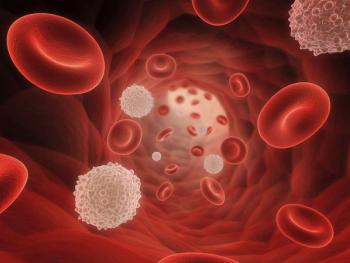
Imaging With 89Zr-DFO-Girentuximab May Better Identify Kidney Tumors
Data from the phase 3 ZIRCON trial evaluating 89Zr-DFO-girentuximab in patients with renal tumors may be practice changing, according to an expert from the University of California Los Angeles.
Imaging with 89Zr-DFO-girentuximab may help with risk stratifying and identifying patients with renal tumors, according to results from the phase 3 ZIRCON trial (NCT03849118).
“This is a pivotal phase 3 trial that I think is going to be practice changing to the urology community,” said Brian Shuch, MD, the Director of the Kidney Cancer Program and the Alvin & Carrie Meinhardt Endowed Chair in Kidney Cancer Research, UCLA.
Unmet need
Characterization of renal masses includes anatomic imaging and renal mass biopsy. However, Shuch noted that imaging cannot reliably distinguish between benign and malignant renal masses. “The sensitivity and specificity is around 70%,” he said.
Further, Shuch added that renal mass biopsies are invasive, can have some complications, are infrequently performed in the US, and can also be non-diagnostic. “Clear cell kidney cancer [occurs in] 75% of the tumors we see, and we know about 90% of the patients who will die of kidney cancer have this histology.”
Therefore, he added, there is a need for accurate, noninvasive methods for pre-treatment risk stratification to guide the management of this patient population.
ZIRCON study
Girentuximab is a monoclonal antibody that targets carbonic anhydrase IX (CAIX)—an enzyme highly expressed in clear cell renal carcinoma (ccRCC). Previous studies have shown that it is feasible to image CAIX, while other studies demonstrated that 89Zr-DFO-girentuximab was safe and allowed for imaging of ccRCC at 4 to 7 days after administration.
Therefore, Shuch and colleagues conducted the phase 3 ZIRCON study to evaluated the performance of 89Zr-DFO-girentuximab PET/CT for the detection of ccRCC. The trial was conducted across 36 sites in 9 countries.
To be eligible for the trial, patients had to have a single intermediate renal mass (cT1) on CT or MRI suspicious for ccRCC, and were scheduled for surgical removal.
89Zr-DFO-girentuximab was administered in 300 patients, followed by abdominal PET/CT imaging 5±2 days after administration, and then partial/radical nephrectomy within 90 days after administration.
The primary end point was sensitivity and specificity of 89Zr-DFO-girentuximab PET/CT, compared with central histology. Secondary end points included sensitivity and specificity of 89Zr-DFO-girentuximab PET/CT in the cT1a subgroup of patients.
In total, 284 patients were included in the primary analysis, and 148 in the secondary analysis.
Study results
Amongst the 3 independent readers, sensitivity and specificity of 89Zr-DFO-girentuximab were 85.5% (95% CI, 79.8%-89.8%) and 87% (95% CI, 78.8%-92.3%), respectively. The readers reported an overall positive predictive value of 93% (95% CI, 88%-96%) and negative predictive value of 75% (95% CI, 66%-82%). The accuracy was reported at 86% (95% CI, 81.5%-89.6%).
In cT1a lesions, sensitivity and specificity were 85.5% (95% CI, 77%-91.2%) and 89.5% (95% CI, 78.6%-95.2%), respectively, while the positive and negative predictive values were 93.4% (95% CI, 86.1%-97%) and 78% (95% CI, 66.2%-86.5%), respectively. The accuracy rate in the subanalysis was 87% (95% CI, 80.6%-91.4%).
According to an exploratory analysis of lesions 2 cm or smaller (n = 48), the sensitivity and specificity were 84.0% (95% CI, 65.4%-93.6%) and 92.3% (95% CI, 66.7%-98.6%), respectively, while the positive and negative predictive values were 95.5% (95% CI, 78.2%-99.2%) and 75.0% (95% CI, 50.5%-89.8%), respectively. The accuracy rate in the exploratory analysis was 86.8% (95% CI, 72.7%-94.3%).
Shuch noted that very few adverse events (AEs) were related to 89Zr-DFO-girentuximab, most being mild, with only 18 patients (6%) experiencing a grade 3 or higher treatment-emergent AE. No new safety signals were observed, and were consistent with previous imaging and therapy studies of girentuximab.
“Overall, it was a very safe agent to be administered,” Such concluded. “We clearly show here that this is better than conventional, cross-sectional imaging at detecting clear cell kidney cancer. We believe this will be for stratification so [some] patients do not need to go for biopsy.”
These findings were presented at the 2023 American Urological Association Annual Meeting.
Reference
Shuch B, Pantuck AJ, Bernhard JC, et al. 89Zr-DFO-girentuximab for PET/CT Imaging of Indeterminate Renal Masses - Results from Phase 3 ZIRCON Study. J Urol. 2023;209(4):e1192. doi:10.1097/JU.0000000000003426.01.
Newsletter
Stay up to date on recent advances in the multidisciplinary approach to cancer.

















































































